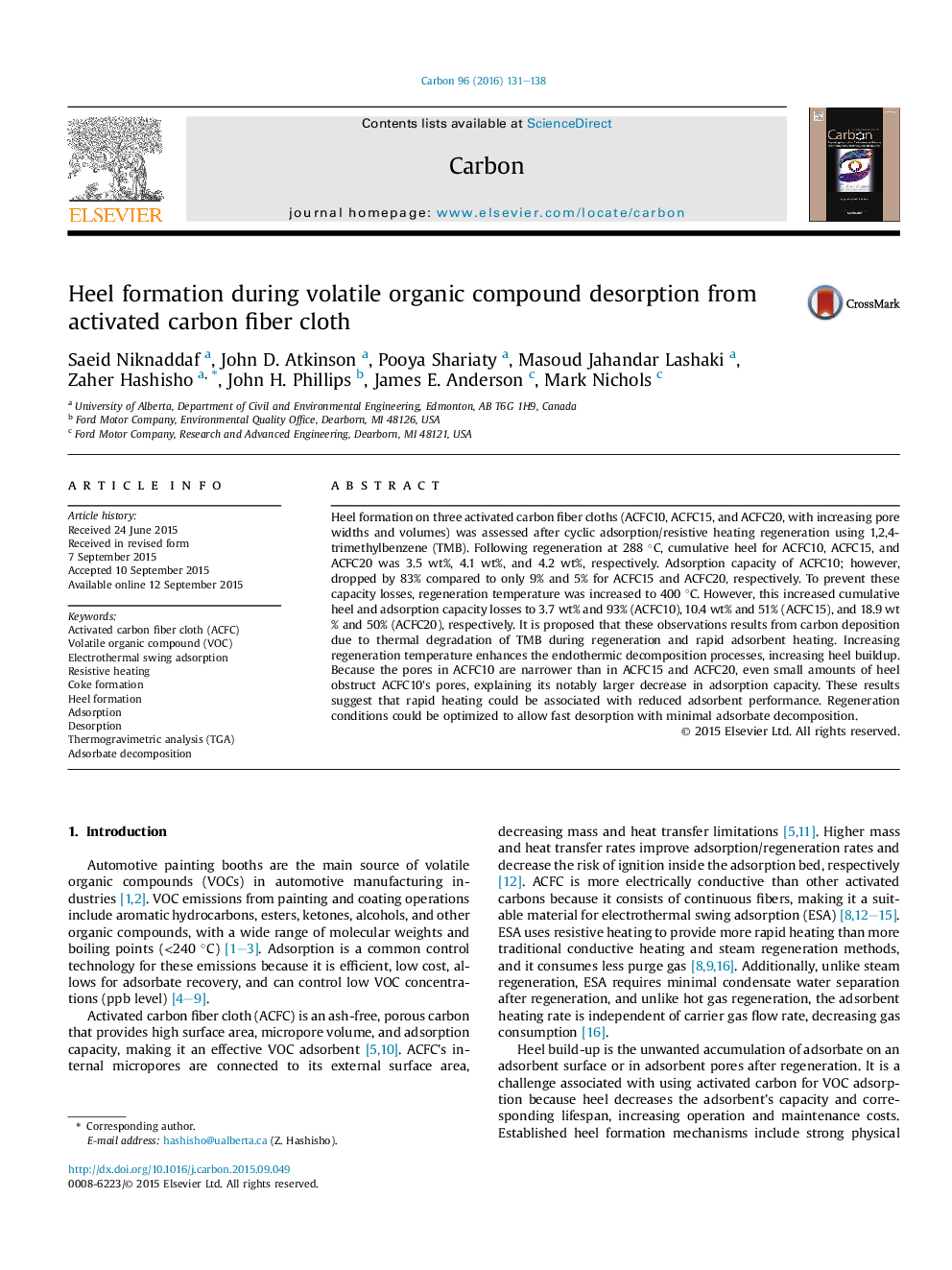| Article ID | Journal | Published Year | Pages | File Type |
|---|---|---|---|---|
| 7850776 | Carbon | 2016 | 8 Pages |
Abstract
Heel formation on three activated carbon fiber cloths (ACFC10, ACFC15, and ACFC20, with increasing pore widths and volumes) was assessed after cyclic adsorption/resistive heating regeneration using 1,2,4-trimethylbenzene (TMB). Following regeneration at 288 °C, cumulative heel for ACFC10, ACFC15, and ACFC20 was 3.5 wt%, 4.1 wt%, and 4.2 wt%, respectively. Adsorption capacity of ACFC10; however, dropped by 83% compared to only 9% and 5% for ACFC15 and ACFC20, respectively. To prevent these capacity losses, regeneration temperature was increased to 400 °C. However, this increased cumulative heel and adsorption capacity losses to 3.7 wt% and 93% (ACFC10), 10.4 wt% and 51% (ACFC15), and 18.9 wt% and 50% (ACFC20), respectively. It is proposed that these observations results from carbon deposition due to thermal degradation of TMB during regeneration and rapid adsorbent heating. Increasing regeneration temperature enhances the endothermic decomposition processes, increasing heel buildup. Because the pores in ACFC10 are narrower than in ACFC15 and ACFC20, even small amounts of heel obstruct ACFC10's pores, explaining its notably larger decrease in adsorption capacity. These results suggest that rapid heating could be associated with reduced adsorbent performance. Regeneration conditions could be optimized to allow fast desorption with minimal adsorbate decomposition.
Keywords
Related Topics
Physical Sciences and Engineering
Energy
Energy (General)
Authors
Saeid Niknaddaf, John D. Atkinson, Pooya Shariaty, Masoud Jahandar Lashaki, Zaher Hashisho, John H. Phillips, James E. Anderson, Mark Nichols,
